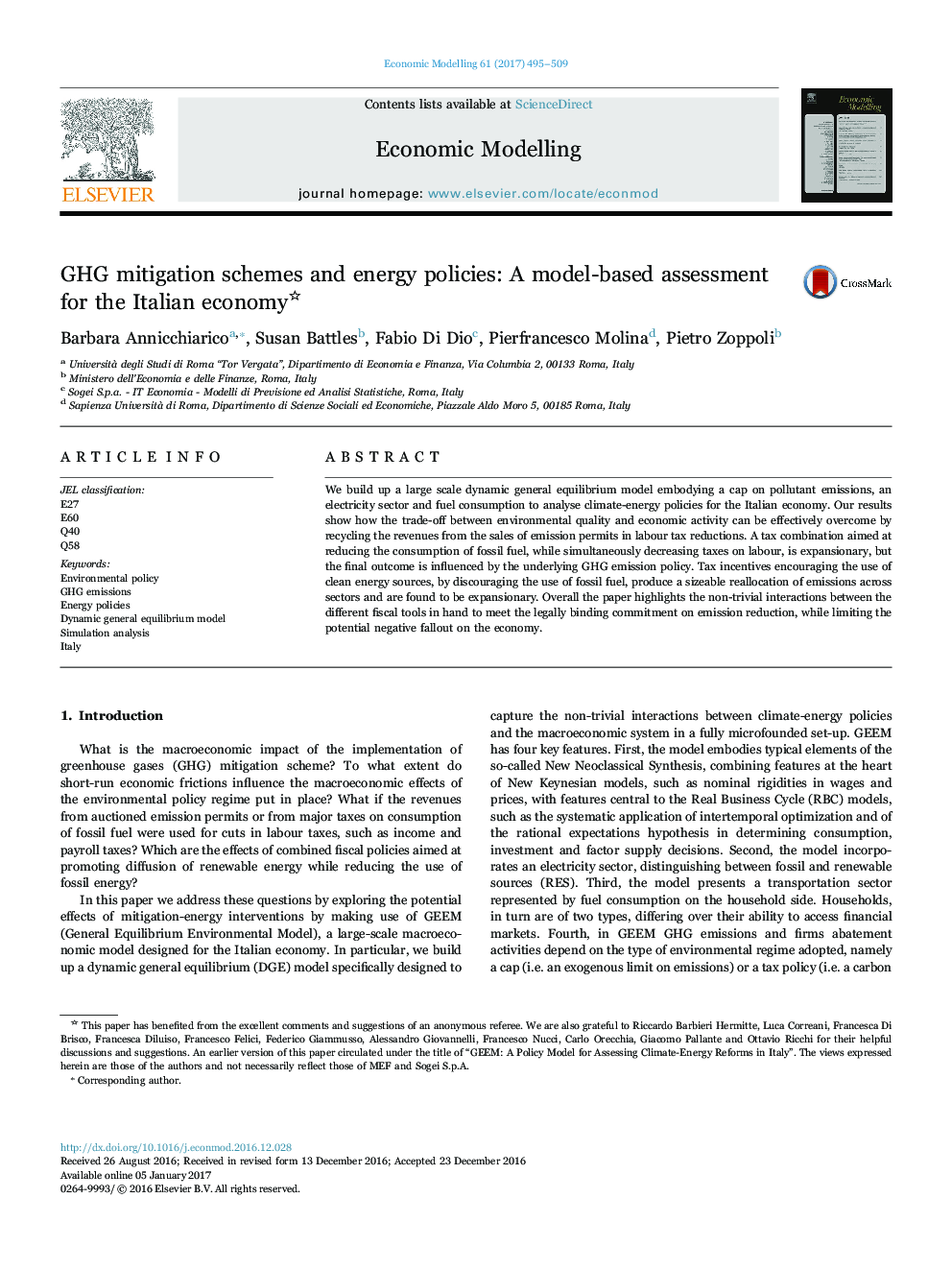| Article ID | Journal | Published Year | Pages | File Type |
|---|---|---|---|---|
| 5053122 | Economic Modelling | 2017 | 15 Pages |
â¢A multi-sector dynamic general equilibrium model with GHG emissions is proposed.â¢We show how to mitigate the trade-off between environmental and economic goals.â¢Large re-allocations of resources across sectors stem from energy and tax policies.
We build up a large scale dynamic general equilibrium model embodying a cap on pollutant emissions, an electricity sector and fuel consumption to analyse climate-energy policies for the Italian economy. Our results show how the trade-off between environmental quality and economic activity can be effectively overcome by recycling the revenues from the sales of emission permits in labour tax reductions. A tax combination aimed at reducing the consumption of fossil fuel, while simultaneously decreasing taxes on labour, is expansionary, but the final outcome is influenced by the underlying GHG emission policy. Tax incentives encouraging the use of clean energy sources, by discouraging the use of fossil fuel, produce a sizeable reallocation of emissions across sectors and are found to be expansionary. Overall the paper highlights the non-trivial interactions between the different fiscal tools in hand to meet the legally binding commitment on emission reduction, while limiting the potential negative fallout on the economy.
